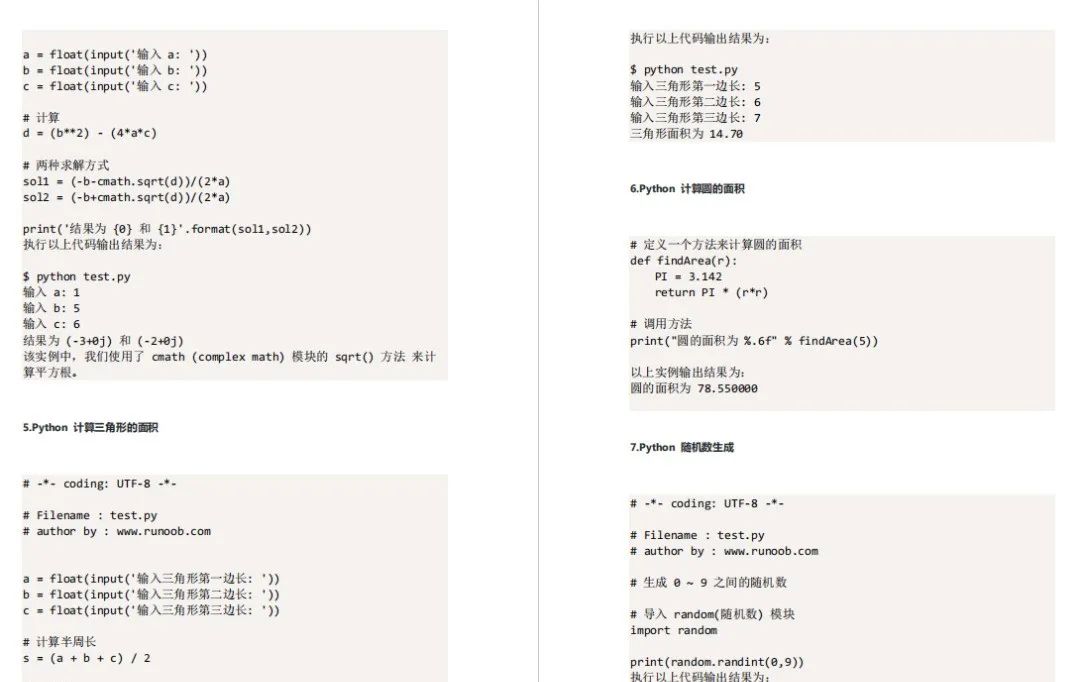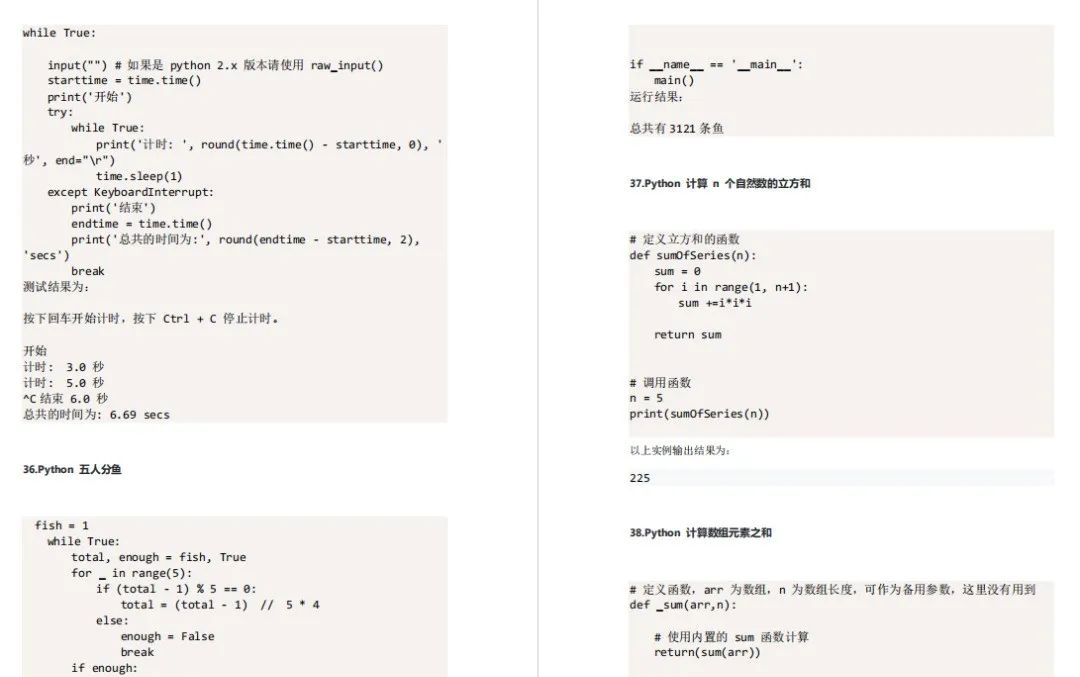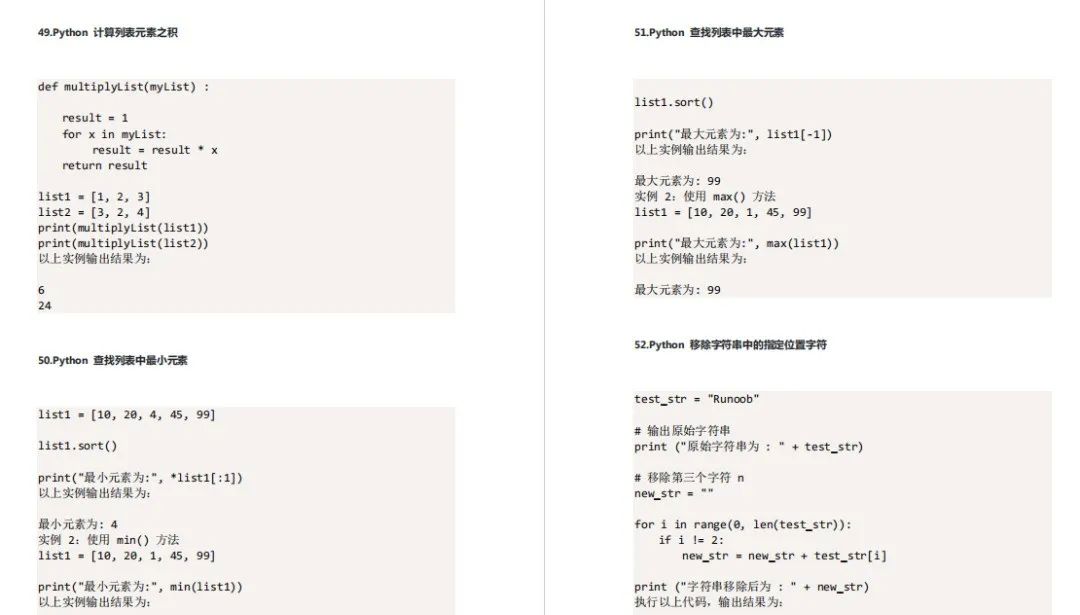Follow 👆 the official account and reply "python" to get the zero-based tutorial! Source from the internet, will delete upon request.[Tutorial The way to obtain it is at the end of the article!!]
Today, I will share with you80 Python beginner examples, all basic examples, classic and practical, with clear code that can be used directly, very suitable for learning and improvement, with wide applicability and strong practicality. Without further ado, let’s take a look!
Python Sum of Numbers
# -*- coding: UTF-8 -*-
# Filename : test.py
# author by : www.runoob.com
# User inputs numbers
num1 = input('Enter the first number: ')
num2 = input('Enter the second number: ')
# Calculate sum
sum = float(num1) + float(num2)
# Display calculation result
print('The sum of {0} and {1} is: {2}'.format(num1, num2, sum))The output of the above code is:
Enter the first number: 1.5
Enter the second number: 2.5
The sum of 1.5 and 2.5 is: 4.0Python Random Number Generation
# -*- coding: UTF-8 -*-
# Filename : test.py
# author by : www.runoob.com
# Generate a random number between 0 and 9
# Import random module
import random
print(random.randint(0,9))
The output of the above code is:
4
In this example, we used the randint() function from the random module to generate a random number, which returns different numbers (0 to 9) each time you execute it. The syntax of this function is:
random.randint(a,b)Python Output Prime Numbers in a Specified Range
# Output prime numbers in a specified range
# Take input from the user
lower = int(input("Enter the minimum value of the range: "))
upper = int(input("Enter the maximum value of the range: "))
for num in range(lower,upper + 1):
# Prime numbers are greater than 1
if num > 1:
for i in range(2,num):
if (num % i) == 0:
break
else:
print(num)
The output of the above program is:
$ python3 test.py
Enter the minimum value of the range: 1
Enter the maximum value of the range: 100Python Calculate Days in Each Month
#!/usr/bin/python3
# author by : www.runoob.com
import calendar
monthRange = calendar.monthrange(2016,9)
print(monthRange)
The output of the above code is:
(3, 30)
The output is a tuple, where the first element corresponds to the first day of the queried month (0-6), and the second element is the number of days in that month. The output of the example indicates that the first day of September 2016 was a Thursday and that month had a total of 30 days.Python Clear a List
RUNOOB = [6, 0, 4, 1]
print('Before clearing:', RUNOOB)
RUNOOB.clear()
print('After clearing:', RUNOOB)
The output of the above example is:
Before clearing: [6, 0, 4, 1]
After clearing: []More Content
1. Python Hello World Example
2. Python Sum of Numbers
3. Python Square Root
4. Python Quadratic Equation
5. Python Calculate Triangle Area
6. Python Calculate Circle Area
7. Python Random Number Generation
8. Python Celsius to Fahrenheit Conversion
9. Python Swap Variables
10. Python If Statement
……



-
Like + View Again
-
Reply “python” in the official account
Get the latest Python zero-based learning materials for 2024, reply in the background:Python
